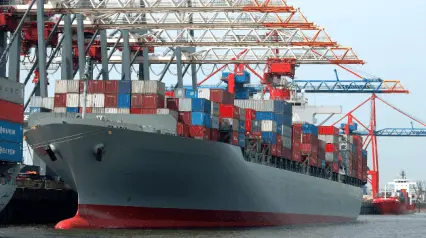What is the ISPS Code?
The ISPS Code is the International Ship and Port Facility’s security code. It serves as a way to regulate maritime operations to ensure the security of ports, cargo, ships, and the crew on board vessels.
The ISPS code is a framework for ports worldwide that allows them to cooperate, interact, and prevent events that may threaten maritime security. The primary goal of the ISPS code is to ensure that the appropriate security measures are in place to protect the crew, cargo, and ships whenever there’s a threat.
It’s also in place to ensure that the proper preventive measures are in place to reduce the chances of security threats happening in the first place. As a result, the ISPS code involves:
- Monitoring cargo activity and crew operations
- Provide security levels for ships
- Implement responsibilities for port and onboard officers, local administrations, and shipping ports
- Collect data on maritime security threats and implement measures to handle the threats
- Detect onboard security threats and implement measures to address them
- Establish definite roles for governments, local administrations, and offices
Who Has to Comply with ISPS?
The ISPS code is a part of SOLAS, which means the ships from all countries that signed the treaty engaged in international travel need to abide by the code. ISPS code doesn’t apply to warships, ships with less than 500 GT, non-commercial yachts, wooden ships, and fishing boats.
Both passenger ships and cargo vessels carrying 3,000 tonnes or more are required to comply with ISPS code. Ships that don’t follow ISPS code may be denied entry to ports, sent away from ports, and will not be issued an International Ship Security Certificate.
Create Your Own ISPS Audit Checklist
Eliminate manual tasks and streamline your operations.
Get started for FREEISPS Requirements
To start, ISPS code requires that all ships with more than 500GT have a Ship Security Plan. Through the code, ports, ships, and local government agencies may cooperate in determining and addressing security threats in the maritime industry.
Some of the main ISPS code requirements include prohibiting the use and carry of unauthorized weapons within ships and port facilities, restricting unauthorized ship access, and establishing security zones. They also include establishing ship security plans, as well as proper training to establish the plans and ensure that everyone involved understands the proper protocol in the event of security threats.
The 3 Levels of ISPS
ISPS Code has three levels of security. This is to indicate the risk level that a ship or port is currently facing, with the accompanying protocol for what to do in the event of these risks. The local port authority consults with the local government to determine the security levels, and they then have to communicate the security levels to the ships for combined action.
Level One
The first level of security is the baseline for all ports and ships. This is used to describe the normal security conditions of the location and is the normal security level of most ports and ships. Under security level one, the minimum security measures need to be maintained at all times.
Level Two
This level indicates heightened security. This level is put in place whenever there’s a heightened risk or security threat. When there’s heightened security, the security experts on board or in the port decide how long to maintain heightened security. When level two is in place, additional security measures and controls will be in place as long as the port or ship remains on security level two.
Level Three
This describes an exceptional security level. This means that there is an imminent security threat to the port or the ship and that specific security measures will be in place to handle the threat. If there is a level three security threat, the authorities will work with government agencies to handle the situation. During this time, they may also implement various protocols that were decided in the event of these types of situations.
What is the ISPS Charge?
The ISPS charge is a surcharge that some customers may have to pay for certain goods.
Complying with ISPS code is very important to ensure that a ship or port can operate internationally as well as to keep the crew and cargo as safe as possible. That said, complying with ISPS code usually means allocating funds for security training, security measures, and other requirements.
So, carriers may pass over some of these costs to the customers by charging an “ISPS charge.” Generally, the party that pays for the freight is required to pay the ISPS charge. In most cases, this will be the consignee or shipper.
ISPS code is integral for maritime security and it also gives organizations the ease of mind that security measures are in place to protect employees and cargo. And to ensure compliance with ISPS code, some carriers may include an ISPS charge in their invoice.




